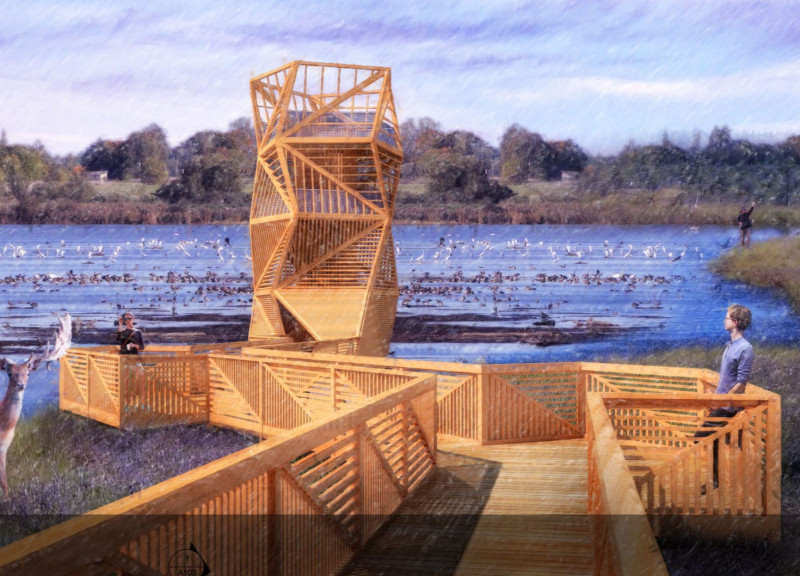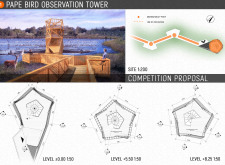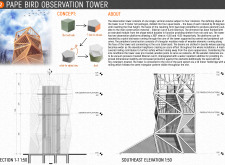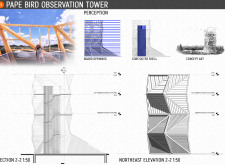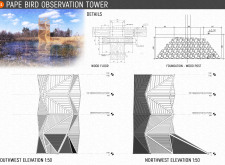5 key facts about this project
### Project Overview
The Pape Bird Observation Tower is situated adjacent to a thriving habitat by a body of water, designed specifically to facilitate wildlife observation, particularly birdwatching. The structure serves both as a destination for nature enthusiasts and a noteworthy addition to the surrounding landscape, achieved through a distinctive geometric form and careful consideration of its environmental context.
### Structural Dynamics and User Experience
The tower's design progresses from a cube to an eleven-meter high pentagonal structure, employing a series of rotations and stacking techniques to create a fluid, dynamic form. This architectural strategy results in four distinct levels, each rotated by 30 degrees, which enhances both visual interest and functional utility, allowing for optimal viewing angles. Access is provided by a central spiral staircase, a solution that prioritizes seamless movement while maintaining aesthetic integrity. Two main observation platforms at heights of 5.5 meters and 8.25 meters offer 360-degree views, allowing users to enjoy varied perspectives without obstructing the line of sight for others. The surrounding railings incorporate triangular patterns that echo natural shapes, reinforcing the tower's connection to its ecological context.
### Material Considerations and Environmental Impact
Material selection plays a critical role in the design, with Siberian Larch (Larix Sibirica) identified as the primary material due to its durability and suitability for outdoor environments. Treatments, including water-repellent additives and pressure treatments, enhance the wood's longevity. Glass is strategically employed in observation areas to sustain visual links between users and the surrounding nature, while metal components contribute to structural stability and safety. The foundation of concrete provides a robust base, ensuring the tower's resilience.
The elevated design minimizes ecological impact by allowing flora and fauna to thrive unimpeded. Moreover, the sharp angles and clean lines of the structure reflect the natural formations inherent to the ecosystem, promoting harmony within the setting. The combination of safety features, such as mesh railings, alongside a focus on sustainability through material choice, fosters an inviting environment that emphasizes both architectural innovation and ecological sensitivity.


